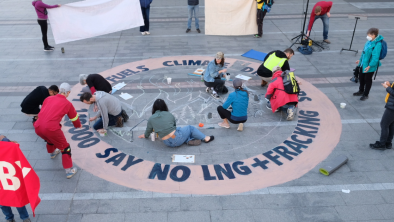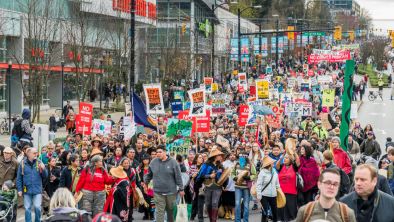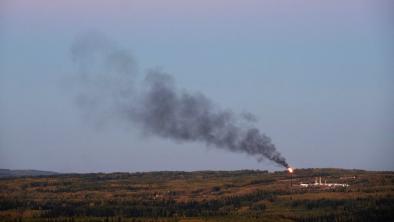Will Ottawa side with First Nations and block B.C. dam?
Wednesday, May 21, 2014
Globe and Mail

Officials from the B.C. and federal governments are preparing a final sales pitch to First Nations on the proposed Site C dam to be delivered next month. Both levels of government are obliged to meet with the aboriginal communities who live, hunt and fish in the path of the proposed hydroelectric dam, but only one level of government has a strong agenda to get to “yes” on the project.
Ottawa has no skin in this game. It has a review panel report in hand that states the dam would harm wildlife and the environment and create hardship for First Nations. The federal cabinet must decide, in the next six months, based on those facts, if it will issue an environmental certificate, which is the formal approval, including any conditions.
For British Columbia, the equation is different. Provincial law allows the cabinet to weigh economic benefits against factors such as the loss of wetlands, which makes it easier to justify the project. And the B.C. Liberal government made the project an election campaign promise – saying the power is needed to help the province’s economy grow.
“In the federal process, there is no capacity for them to consider the socio-economic impacts of a particular process that is proposed. In our process, that is one of the considerations,” B.C. Environment Minister Mary Polak noted in an interview.
The different criteria have led to conflicting decisions – the $1-billion New Prosperity mine proposal got a green light from B.C.’s environmental review but was rejected in Ottawa, much to the frustration of the provincial government.
Both Ottawa and Victoria must approve the project, effectively giving each a veto over Site C because the project requires federal and provincial environmental certificates.
Chief Roland Willson of the West Moberly First Nation said he believes the province wants the dam built. His community opposes it, and is hoping Ottawa will stand in the way based on the recent findings of the Site C joint review panel.
The panel concluded the project would likely have a significant adverse effect on fishing, hunting and trapping opportunities and practices for the First Nations represented by the Treaty 8 Tribal Association – including the West Moberly – as well as the Saulteau First Nations and Blueberry River First Nations.
“These effects cannot be mitigated,” the panel warned.
The Canadian Environmental Assessment Agency has set up meetings in June with the Treaty 8 Tribal Association and individual First Nations. Aboriginal leaders will get a chance to provide feedback on the panel report, and will get to see any draft conditions that may be attached to an environmental certificate.
Chief Willson does not want to talk about conditions for Site C. He wants B.C. Hydro to look at alternatives, including the construction of natural-gas-fired power plants.
“We are not opposed to the development of energy, we are opposed to the destruction of the [Peace River] valley,” he said in an interview on Tuesday. “We should be having a serious talk about the use of gas. We’re pulling it out of the ground so that we can sell it to other countries to burn.”
Although First Nations do not have direct veto powers, he said the panel’s findings provide ammunition for a court challenge if the project moves forward. In particular, the panel noted that the cumulative impact on First Nations of resource development in the region has not been adequately considered.
If there is any check on the B.C. Liberal government’s ambitions for the new dam, it may be on this point. The First Nations in this region sit at the centre of the province’s shale gas resources, which are crucial to the development of a liquefied natural gas industry.
If Premier Christy Clark wants co-operation on developing LNG from First Nations, Chief Willson said, she will have to give up on the dam. “If Christy wants natural gas, she can’t have site C; it’s too much.”
Although the B.C. government has backed the Site C project, it will have to give the final approval to spend at least $8-billion to build it. And if there is any hesitation in Victoria, the Treasury Board could be asked to take a last look at the cost.


